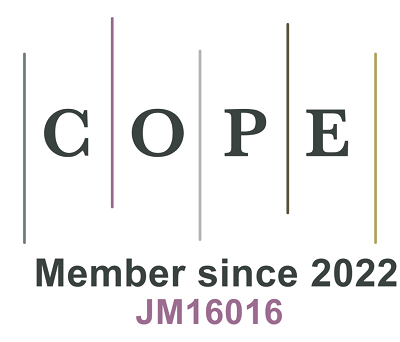REFERENCES
1. Secrest AM, Washington RE, Orchard TJ. Mortality in Type 1 Diabetes. In: Cowie CC, Casagrande SS, Menke A, et al, editors. Diabetes in America. Bethesda (MD): National Institute of Diabetes and Digestive and Kidney Diseases (US); 2018. CHAPTER 35.
2. Zhang X, Dong Y, Liu D, Yang L, Xu J, Wang Q. Antigen-specific immunotherapies in type 1 diabetes. J Trace Elem Med Biol 2022;73:127040.
3. Milluzzo A, Falorni A, Brozzetti A, et al. Risk for coexistent autoimmune diseases in familial and sporadic type 1 diabetes is related to age at diabetes onset. Endocr Pract 2021;27:110-7.
4. Jacobsen LM, Newby BN, Perry DJ, Posgai AL, Haller MJ, Brusko TM. Immune mechanisms and pathways targeted in type 1 diabetes. Curr Diab Rep 2018;18:90.
5. Li SJ, Wu YL, Chen JH, Shen SY, Duan J, Xu HE. Autoimmune diseases: targets, biology, and drug discovery. Acta Pharmacol Sin 2024;45:674-85.
6. Zullo A, Sommese L, Nicoletti G, Donatelli F, Mancini FP, Napoli C. Epigenetics and type 1 diabetes: mechanisms and translational applications. Transl Res 2017;185:85-93.
7. Waernbaum I, Dahlquist G. Low mean temperature rather than few sunshine hours are associated with an increased incidence of type 1 diabetes in children. Eur J Epidemiol 2016;31:61-5.
8. Kostopoulou E, Papachatzi E, Skiadopoulos S, et al. Seasonal variation and epidemiological parameters in children from Greece with type 1 diabetes mellitus (T1DM). Pediatr Res 2021;89:574-8.
9. Ahadi M, Tabatabaeiyan M, Moazzami K. Association between environmental factors and risk of type 1 diabetes - a case-control study. Endokrynol Pol 2011;62:134-7.
11. Wang K, Ye F, Chen Y, et al. Association between enterovirus infection and type 1 diabetes risk: a meta-analysis of 38 case-control studies. Front Endocrinol (Lausanne) 2021;12:706964.
12. Aarnisalo J, Veijola R, Vainionpää R, Simell O, Knip M, Ilonen J. Cytomegalovirus infection in early infancy: risk of induction and progression of autoimmunity associated with type 1 diabetes. Diabetologia 2008;51:769-72.
13. Nishiumi T, Okamoto K, Inamoto S, et al. Case of fulminant type 1 diabetes mellitus associated with parvovirus B19 infection. J Diabetes Investig 2014;5:472-3.
14. Levet S, Medina J, Joanou J, et al. An ancestral retroviral protein identified as a therapeutic target in type-1 diabetes. JCI Insight 2017;2:94387.
15. Butalia S, Kaplan GG, Khokhar B, Rabi DM. Environmental risk factors and type 1 diabetes: past, present, and future. Can J Diabetes 2016;40:586-93.
16. Rubino F, Amiel SA, Zimmet P, et al. New-onset diabetes in covid-19. N Engl J Med 2020;383:789-90.
17. Suwanwongse K, Shabarek N. Newly diagnosed diabetes mellitus, DKA, and COVID-19: causality or coincidence? J Med Virol 2021;93:1150-3.
18. Zhou H, Zhao X, Sun L, et al. Gut microbiota profile in patients with type 1 diabetes based on 16S rRNA gene sequencing: a systematic review. Dis Markers 2020;2020:3936247.
19. Vaarala O, Atkinson MA, Neu J. The “perfect storm” for type 1 diabetes: the complex interplay between intestinal microbiota, gut permeability, and mucosal immunity. Diabetes 2008;57:2555-62.
20. Abuqwider J, Corrado A, Scidà G, et al. Gut microbiome and blood glucose control in type 1 diabetes: a systematic review. Front Endocrinol (Lausanne) 2023;14:1265696.
21. Chierico F, Rapini N, Deodati A, Matteoli MC, Cianfarani S, Putignani L. Pathophysiology of type 1 diabetes and gut microbiota role. Int J Mol Sci 2022;23:14650.
22. Meng X, Layhadi JA, Keane ST, Cartwright NJK, Durham SR, Shamji MH. Immunological mechanisms of tolerance: central, peripheral and the role of T and B cells. Asia Pac Allergy 2023;13:175-86.
23. Unger WW, Pearson T, Abreu JR, et al. Islet-specific CTL cloned from a type 1 diabetes patient cause beta-cell destruction after engraftment into HLA-A2 transgenic NOD/scid/IL2RG null mice. PLoS One 2012;7:e49213.
24. Bluestone JA, Herold K, Eisenbarth G. Genetics, pathogenesis and clinical interventions in type 1 diabetes. Nature 2010;464:1293-300.
25. Atkinson MA, Bluestone JA, Eisenbarth GS, et al. How does type 1 diabetes develop? Diabetes 2011;60:1370-9.
26. Lennon GP, Bettini M, Burton AR, et al. T cell islet accumulation in type 1 diabetes is a tightly regulated, cell-autonomous event. Immunity 2009;31:643-53.
27. Skowera A, Ladell K, McLaren JE, et al. β-cell-specific CD8 T cell phenotype in type 1 diabetes reflects chronic autoantigen exposure. Diabetes 2015;64:916-25.
28. Greeley SA, Katsumata M, Yu L, et al. Elimination of maternally transmitted autoantibodies prevents diabetes in nonobese diabetic mice. Nat Med 2002;8:399-402.
29. Vehik K, Bonifacio E, Lernmark Å, et al; TEDDY Study Group. Hierarchical order of distinct autoantibody spreading and progression to type 1 diabetes in the TEDDY study. Diabetes Care 2020;43:2066-73.
30. Mathieu C, Martens PJ. Arresting type 1 diabetes: are we there yet? Metab Target Organ Damage 2022;2:15.
31. Maddaloni E, Bolli GB, Frier BM, et al. C-peptide determination in the diagnosis of type of diabetes and its management: a clinical perspective. Diabetes Obes Metab 2022;24:1912-26.
34. Nakayama M, Michels AW. Using the T cell receptor as a biomarker in type 1 diabetes. Front Immunol 2021;12:777788.
35. Moulder R, Välikangas T, Hirvonen MK, et al; INNODIA consortium. Targeted serum proteomics of longitudinal samples from newly diagnosed youth with type 1 diabetes distinguishes markers of disease and C-peptide trajectory. Diabetologia 2023;66:1983-96.
36. Maddipati KR, Marnett LJ. Characterization of the major hydroperoxide-reducing activity of human plasma. Purification and properties of a selenium-dependent glutathione peroxidase. J Biol Chem 1987;262:17398-403.
37. Zhang N, Liao H, Lin Z, Tang Q. Insights into the role of glutathione peroxidase 3 in non-neoplastic diseases. Biomolecules 2024;14:689.
38. Insel RA, Dunne JL, Atkinson MA, et al. Staging presymptomatic type 1 diabetes: a scientific statement of JDRF, the endocrine society, and the American diabetes association. Diabetes Care 2015;38:1964-74.
39. Sims EK, Besser REJ, Dayan C, et al; NIDDK Type 1 Diabetes TrialNet Study Group. Screening for type 1 diabetes in the general population: a status report and perspective. Diabetes 2022;71:610-23.
40. Feutren G, Papoz L, Assan R, et al. Cyclosporin increases the rate and length of remissions in insulin-dependent diabetes of recent onset. Results of a multicentre double-blind trial. Lancet 1986;2:119-24.
41. Masharani UB, Becker J. Teplizumab therapy for type 1 diabetes. Expert Opin Biol Ther 2010;10:459-65.
42. Smith JA, Tso JY, Clark MR, Cole MS, Bluestone JA. Nonmitogenic anti-CD3 monoclonal antibodies deliver a partial T cell receptor signal and induce clonal anergy. J Exp Med 1997;185:1413-22.
43. Herold KC, Gitelman SE, Gottlieb PA, Knecht LA, Raymond R, Ramos EL. Teplizumab: a disease-modifying therapy for type 1 diabetes that preserves β-cell function. Diabetes Care 2023;46:1848-56.
44. Herold KC, Hagopian W, Auger JA, et al. Anti-CD3 monoclonal antibody in new-onset type 1 diabetes mellitus. N Engl J Med 2002;346:1692-8.
45. Herold KC, Gitelman SE, Ehlers MR, et al. AbATE Study Team. Teplizumab (anti-CD3 mAb) treatment preserves C-peptide responses in patients with new-onset type 1 diabetes in a randomized controlled trial: metabolic and immunologic features at baseline identify a subgroup of responders. Diabetes 2013;62:3766-74.
46. Sherry N, Hagopian W, Ludvigsson J, et al. Protégé Trial Investigators. Teplizumab for treatment of type 1 diabetes (Protégé study): 1-year results from a randomised, placebo-controlled trial. Lancet 2011;378:487-97.
47. Herold KC, Bundy BN, Alice Long S, et al. An anti-CD3 antibody, teplizumab, in relatives at risk for type 1 diabetes. N Engl J Med 2020;382:586.
48. Ramos EL, Dayan CM, Chatenoud L, et al; PROTECT Study Investigators. Teplizumab and β-Cell function in newly diagnosed type 1 diabetes.N Engl J Med 2023;389:2151-61.
49. Aronson R, Gottlieb PA, Christiansen JS, et al; DEFEND Investigator Group. Low-dose otelixizumab anti-CD3 monoclonal antibody DEFEND-1 study: results of the randomized phase III study in recent-onset human type 1 diabetes. Diabetes Care 2014;37:2746-54.
50. Ambery P, Donner TW, Biswas N, Donaldson J, Parkin J, Dayan CM. Efficacy and safety of low-dose otelixizumab anti-CD3 monoclonal antibody in preserving C-peptide secretion in adolescent type 1 diabetes: DEFEND-2, a randomized, placebo-controlled, double-blind, multi-centre study. Diabet Med 2014;31:399-402.
51. Keymeulen B, van Maurik A, Inman D, et al. A randomised, single-blind, placebo-controlled, dose-finding safety and tolerability study of the anti-CD3 monoclonal antibody otelixizumab in new-onset type 1 diabetes. Diabetologia 2021;64:313-24.
52. Siddiqui S, Cox J, Herzig R, Palaniyandi S, Hildebrandt GC, Munker R. Anti-thymocyte globulin in haematology: recent developments. Indian J Med Res 2019;150:221-7.
53. Simon G, Parker M, Ramiya V, et al. Murine antithymocyte globulin therapy alters disease progression in NOD mice by a time-dependent induction of immunoregulation. Diabetes 2008;57:405-14.
54. Gitelman SE, Gottlieb PA, Rigby MR, et al; START Study Team. Antithymocyte globulin treatment for patients with recent-onset type 1 diabetes: 12-month results of a randomised, placebo-controlled, phase 2 trial. Lancet Diabetes Endocrinol 2013;1:306-16.
55. Haller MJ, Long SA, Blanchfield JL, et al; Type 1 Diabetes TrialNet ATG-GCSF Study Group. Low-dose anti-thymocyte globulin preserves C-peptide, reduces HbA1c, and increases regulatory to conventional T-cell ratios in new-onset type 1 diabetes: two-year clinical trial data. Diabetes 2019;68:1267-76.
56. Foster TP, Jacobsen LM, Bruggeman B, et al. Low-dose antithymocyte globulin: a pragmatic approach to treating stage 2 type 1 diabetes. Diabetes Care 2024;47:285-9.
57. Pescovitz MD. The use of rituximab, anti-CD20 monoclonal antibody, in pediatric transplantation. Pediatr Transplant 2004;8:9-21.
58. Pescovitz MD, Greenbaum CJ, Krause-Steinrauf H, et al; Type 1 diabetes Trialnet anti-CD20 study group. Rituximab, B-lymphocyte depletion, and preservation of beta-cell function. N Engl J Med 2009;361:2143-52.
59. Pescovitz MD, Greenbaum CJ, Bundy B, et al; Type 1 Diabetes TrialNet anti-CD20 Study Group. B-lymphocyte depletion with rituximab and β-cell function: two-year results. Diabetes Care 2014;37:453-9.
61. Korhonen R, Moilanen E. Abatacept, a novel CD80/86-CD28 T cell co-stimulation modulator, in the treatment of rheumatoid arthritis. Basic Clin Pharmacol Toxicol 2009;104:276-84.
62. Herrero-Beaumont G, Martínez Calatrava MJ, Castañeda S. Abatacept mechanism of action: concordance with its clinical profile. Reumatol Clin 2012;8:78-83.
63. Orban T, Bundy B, Becker DJ, et al; Type 1 Diabetes TrialNet Abatacept Study Group. Costimulation modulation with abatacept in patients with recent-onset type 1 diabetes: follow-up 1 year after cessation of treatment. Diabetes Care 2014;37:1069-75.
64. Russell WE, Bundy BN, Anderson MS, et al; Type 1 Diabetes TrialNet Study Group. Abatacept for delay of type 1 diabetes progression in stage 1 relatives at risk: a randomized, double-masked, controlled trial. Diabetes Care 2023;46:1005-13.
65. Chamian F, Lin SL, Lee E, et al. Alefacept (anti-CD2) causes a selective reduction in circulating effector memory T cells (Tem) and relative preservation of central memory T cells (Tcm) in psoriasis. J Transl Med 2007;5:27.
66. Chaarani J, Lebwohl M. Alefacept: where it stands today. Expert Opin Drug Metab Toxicol 2010;6:355-61.
67. Rigby MR, DiMeglio LA, Rendell MS, et al; T1DAL Study Team. Targeting of memory T cells with alefacept in new-onset type 1 diabetes (T1DAL study): 12 month results of a randomised, double-blind, placebo-controlled phase 2 trial. Lancet Diabetes Endocrinol 2013;1:284-94.
68. Diggins KE, Serti E, Muir V, et al. Exhausted-like CD8+ T cell phenotypes linked to C-peptide preservation in alefacept-treated T1D subjects. JCI Insight 2021;6:142680.
69. Lu J, Liu J, Li L, Lan Y, Liang Y. Cytokines in type 1 diabetes: mechanisms of action and immunotherapeutic targets. Clin Transl Immunology 2020;9:e1122.
70. Mastrandrea L, Yu J, Behrens T, et al. Etanercept treatment in children with new-onset type 1 diabetes: pilot randomized, placebo-controlled, double-blind study. Diabetes Care 2009;32:1244-9.
71. Quattrin T, Haller MJ, Steck AK, et al; T1GER Study Investigators. Golimumab and Beta-cell function in youth with new-onset type 1 diabetes. N Engl J Med 2020;383:2007-17.
72. Huang IH, Chung WH, Wu PC, Chen CB. JAK-STAT signaling pathway in the pathogenesis of atopic dermatitis: an updated review. Front Immunol 2022;13:1068260.
73. Benucci M, Bernardini P, Coccia C, et al. JAK inhibitors and autoimmune rheumatic diseases. Autoimmun Rev 2023;22:103276.
74. Waibel M, Wentworth JM, So M, et al; BANDIT Study Group. Baricitinib and β-cell function in patients with new-onset type 1 diabetes. N Engl J Med 2023;389:2140-50.
75. Nagy S, Demory Beckler M, Hussein A, Kesselman MM. The development of diabetes and diabetic ketoacidosis following immunotherapy treatment: a systematic review of case reports. Cureus 2024;16:e57894.
76. Nepal D, Putman M. Phase 2 trial of peresolimab for adults with rheumatoid arthritis. N Engl J Med 2023;389:378-9.
77. Long D, Chen Y, Wu H, Zhao M, Lu Q. Clinical significance and immunobiology of IL-21 in autoimmunity. J Autoimmun 2019;99:1-14.
78. Rydén AK, Perdue NR, Pagni PP, et al. Anti-IL-21 monoclonal antibody combined with liraglutide effectively reverses established hyperglycemia in mouse models of type 1 diabetes. J Autoimmun 2017;84:65-74.
79. Herrath M, Bain SC, Bode B, et al; Anti-IL-21–liraglutide Study Group investigators and contributors. Anti-interleukin-21 antibody and liraglutide for the preservation of β-cell function in adults with recent-onset type 1 diabetes: a randomised, double-blind, placebocontrolled, phase 2 trial. Lancet Diabetes Endocrinol 2021;9:212-24.
80. Coppieters K, von Herrath M. Antigen-specific peptide immunotherapy for type 1 diabetes: proof of safety, hope for efficacy. Cell Metab 2017;26:595-7.
81. Steck AK, Fouts A, Miao D, et al; TrialNet Study Group. ECL-IAA and ECL-GADA can identify high-risk single autoantibodypositive relatives in the TrialNet pathway to prevention study. Diabetes Technol Ther 2016;18:410-4.
82. Ziegler AG, Hummel M, Schenker M, Bonifacio E. Autoantibody appearance and risk for development of childhood diabetes in offspring of parents with type 1 diabetes: the 2-year analysis of the German BABYDIAB Study. Diabetes 1999;48:460-8.
83. Prevention Trial--Type 1 Diabetes Study Group. Effects of insulin in relatives of patients with type 1 diabetes mellitus. N Engl J Med 2002;346:1685-91.
84. Skyler JS, Krischer JP, Wolfsdorf J, et al. Effects of oral insulin in relatives of patients with type 1 diabetes: the diabetes prevention trial--type 1. Diabetes Care 2005;28:1068-76.
85. Krischer JP, Schatz DA, Bundy B, Skyler JS, Greenbaum CJ; Writing Committee for the Type 1 Diabetes TrialNet Oral Insulin Study Group. Effect of oral insulin on prevention of diabetes in relatives of patients with type 1 diabetes: a randomized clinical trial. JAMA 2017;318:1891-902.
86. Ludvigsson J, Krisky D, Casas R, et al. GAD65 antigen therapy in recently diagnosed type 1 diabetes mellitus. N Engl J Med 2012;366:433-42.
87. Tavira B, Cheramy M, Axelsson S, Åkerman L, Ludvigsson J, Casas R. Effect of simultaneous vaccination with H1N1 and GAD-alum on GAD65-induced immune response. Diabetologia 2017;60:1276-83.
88. Casas R, Dietrich F, Puente-Marin S, et al. Intra-lymphatic administration of GAD-alum in type 1 diabetes: long-term follow-up and effect of a late booster dose (the DIAGNODE extension trial). Acta Diabetol 2022;59:687-96.
89. Hannelius U, Beam CA, Ludvigsson J. Efficacy of GAD-alum immunotherapy associated with HLA-DR3-DQ2 in recently diagnosed type 1 diabetes. Diabetologia 2020;63:2177-81.
90. Roep BO, Solvason N, Gottlieb PA, et al; BHT-3021 Investigators. Plasmid-encoded proinsulin preserves C-peptide while specifically reducing proinsulin-specific CD8+ T cells in type 1 diabete. Sci Transl Med 2013;5:191ra8.
91. Bender C, Rodriguez-Calvo T, Amirian N, Coppieters KT, von Herrath MG. The healthy exocrine pancreas contains preproinsulin-specific CD8 T cells that attack islets in type 1 diabetes. Sci Adv 2020;6:eabc5586.
92. Anderson AM, Landry LG, Alkanani AA, et al. Human islet T cells are highly reactive to preproinsulin in type 1 diabetes. Proc Natl Acad Sci U S A 2021;118:e2107208118.
93. Lin C, Hu S, Cai X, et al. The opportunities and challenges of the disease-modifying immunotherapy for type 1 diabetes: a systematic review and meta-analysis. Pharmacol Res 2024;203:107157.
94. Purcell AW, Sechi S, DiLorenzo TP. The evolving landscape of autoantigen discovery and characterization in type 1 diabetes. Diabetes 2019;68:879-86.
95. Wilcox NS, Rui J, Hebrok M, Herold KC. Life and death of β cells in type 1 diabetes: a comprehensive review. J Autoimmun 2016;71:51-8.
96. Sims EK, Bundy BN, Stier K, et al; Type 1 Diabetes TrialNet Study Group. Teplizumab improves and stabilizes beta cell function in antibody-positive high-risk individual. Sci Transl Med 2021;13:eabc8980.









